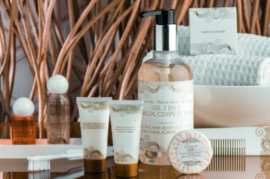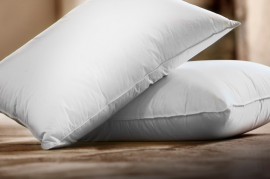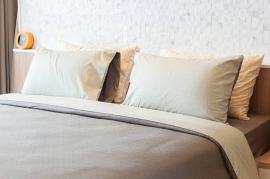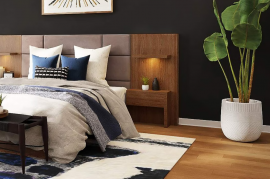Bed bug detection in hotels
Bed bug detection in hotels Bed bug covers, insecticides, treatment pads and steam cleaners are your greatest allies during a bedbug invasion. But above all, it is important to detect bedbugs as soon as possible because once they are established, they are very difficult to eliminate and proliferate quickly, laying up to 500 eggs per day. It is necessary to regularly look for blackish droppings in the bedding. This can be accompanied by small blood stains in the sheets if bites from guests of your hotel establishment. During general infection, you will also find bedbugs, eggs and droppings on curtains, furniture and in any gap in the room. They also give off a characteristic pungent odor. Yes, you can carry bedbugs on you. Indeed, the first vector of diffusion is the baggage. It is therefore not only the bedding that can be touched but the entire room, as well as the lounges and luggage. Clothes, bed linen… can therefore carry bedbugs. In this case, it is necessary to wash them at a very high temperature but be careful, bed bugs can survive between 12 and 18 months without feeding. The second vector of diffusion of these small bed insects is the vacuum cleaner because it does not kill the bed bugs sucked up. They can thus come out at any time and invade other rooms. Contents of this file:
Detection and control protocol
Level 1: Detection of traces left by bedbugs It is important to know how to identify the presence of bedbugs as early as possible, so that you can eradicate bedbugs before they have had time to settle in the corners and reproduce. Searching the sheets for blackish droppings from bedbugs (similar to fly droppings) can detect their presence. You should also look for the same droppings on the footboards, frames and slats of box springs. Infested luggage may have been deposited on the bed and will be the cause of infestation of your bedding first, but it is most often placed on the floor or on the luggage rack and the bed bugs will then come in through the floor and go up towards the bedding by the feet, the connections against the wall (headboard,…). When your clients get bitten, bed bugs leave small, pinhead-sized bloodstains that you can spot on the sheets.
Level 2: Detection of a general infestation by bedbugs The primary vector for the transport and infestation of bedbugs is luggage. Also the first infested rooms are the bedrooms, the living rooms and the luggage rooms. The second vector of diffusion within your establishment is your vacuum cleaner, the bed bugs sucked up are not eliminated. They may come out of your vacuum cleaner when it is stored. They can even occur in the suction lines, fittings, in the bag, and sometimes even in the brushes of the vacuum cleaner. They can therefore spread to other rooms where a vacuum cleaner has stayed.
Equipped with a flashlight, you must look for bedbugs, eggs, droppings:
- In the mattresses: (along the ticking, in the folds, around the label, on the ventilation openings, around the straps and handles, ...),
- in the bedding structure (slats of box springs, bed frames and uprights, bed feet),
- In and behind curtains (rods, fastening, hooks, hem and seams)
- On objects close to the bed (behind frames and pictures, on shelves, in bedside tables, furniture drawers, etc.)
- In ventilation grilles and vents, fixings for chandeliers and wall lights, ...,
- In cracks in walls, plinths, wallpaper peeling
- Along baseboards and headboards
- Behind and under furniture,
- In the cupboards
- In window joints and moldings and door frames and more generally any interstice, crack or hole in the room. In heavy infestations, a pungent odor is also recognizable
Treatment of an infested room
Step 1: Condemnation of the room As soon as a place is Level 1: Detection of traces left by bedbugs affected, you must block access to it. To protect yourself and not transfer bedbugs to other places, coveralls, overshoes, gloves and a mask (in the case of chemical treatment) are useful when working in the room.
Step 2: Textile processing Place all items that can be removed in plastic bags. There are water soluble bags from 55 ° C that you can place directly in a washing machine for washing at 60 ° C minimum to prevent bed bugs from escaping when you transfer the textiles into the washing machine. -laundry. You can also place the textiles in a dryer for at least 30 minutes at high temperature (taking care to remove the plastic bag in the dryer). For textiles that cannot be washed at 60 ° C minimum, spray with a pyrethrum-based insecticide and keep them in an airtight bag for at least 24 hours.
Step 3: Cleaning before treatment Especially if you have chosen a chemical treatment, it is strongly recommended to vacuum thoroughly with a narrow nozzle in order to vacuum up eggs, larvae and insects. In cracks, cracks and other nooks, it is necessary to vacuum everything that is possible and to stay longer in these areas. CAUTION: The vacuum cleaner does not kill bed bugs, you must clean the ducts and hoses of your vacuum cleaner with very hot water. You must also: either insert an anti-bug tag in the bag of your vacuum cleaner, or immediately throw away the bag of your vacuum cleaner after vacuuming.
Step 4: Processing the part The spraying of an insecticide (based on natural pyrethrum or Permethrin) and / or the use of a dry steam cleaner (temperature over 120 ° C) represent the two main methods of eradicating bedbugs. The use of smoke does not allow such complete diffusion in cracks and cracks and its effectiveness is therefore less in the case of a widespread infestation throughout the room.
Whether chemical (insecticide spraying) mechanical (dry steam treatment) or a combination of the two, the treatment must be done in all the corners where bedbugs can develop as well as on and in all soiled elements.
- The insecticide must be sprayed carefully, let it act for at least an hour, then ventilate the room widely for several hours. A new spray will be necessary within 10 days as the insecticide has less effect on the eggs which may hatch after the first treatment.
- The dry steam cleaner produces a steam over 120 ° which kills bed bugs, larvae and even eggs. It requires careful passage. The nozzle must be moved at a maximum speed of 30 cm per second and less than 10 cm from the objects and places to be treated. Its effectiveness hardly exceeds 20 centimeters in depth within cracks and crevices. A second pass as meticulous will be necessary within 5 days. CAUTION: For delicate textiles which may be sensitive to high temperatures. It is also strongly recommended to remove the nesting places represented by the peeling of wallpapers, carpets, cracks in joints, walls, baseboards, port frames and windows.
Step 5: Treatment of the bedding Spraying an insecticide on a mattress, a box spring alone is not enough to destroy the bedbugs that have often taken refuge inside. Thorough dry steaming of both sides, sides and seams of a mattress at least once within five days can kill bedbugs.
On the other hand, the tubes of the mattress bases with metal frames often offer a refuge that is difficult to access any treatment. So more actions are needed.
1) - The mattress covers of box springs, pillows and bolsters are airtight, and have been specially woven to erect a barrier against bedbugs. They also facilitate the detection of droppings because their folds and seams are reduced. If the insects have entered the mattress, box spring or pillow, they are trapped by the cover and must remain so for at least 18 months. Indeed, a bedbug can survive for 12 to 14 months without feeding. Therefore, do not remove the cover before this time. The cover is also an effective protection and prevention tool to prevent infestation of your bedding.
2) - Anti-bedbug pads. They act as an insecticide and repellent. For a bed 80-90 cm wide, Distribute 2 anti-bedbug pads between the mattress and the base of the bed at the location of the shoulders and knees of the person. Double the quantity for a 140-160 cm wide bed accommodating two occupants. The progressive diffusion of the biocide eradicates the eggs, the larvae and the insects and protects the mattress, the box spring and its occupants for approximately 3 months. The essential oils of Eucalyptus, Lavandin and Geraniol act as a repellant.
Step 6: Cleaning after treatment After each treatment, it is advisable to vacuum thoroughly with a narrow nozzle in order to vacuum up eggs, larvae and insects. In cracks, cracks and other nooks, it is necessary to vacuum everything that is possible and to stay longer in the area. CAUTION: The vacuum cleaner does not kill bed bugs, you must clean the ducts and hoses of your vacuum cleaner with very hot water. You must either insert an anti-bug tag in the bag of your vacuum cleaner, or immediately throw away the bag of your vacuum cleaner.
Step 7: Monitoring and control As we have already indicated, whatever the treatment carried out, it is imperative to carry out a second treatment within the following 5 days. This second pass will eliminate the rare bedbugs that would not have been targeted during the first treatment.
It is also imperative to check the effectiveness of your treatments once a week in order to be reactive in case of new discovery of droppings or eggs.
There are bed bug detectors that you can place in the bedroom, but their effectiveness remains relative as they must be in the path that the bed bugs take. Other more or less exotic and more or less conspicuous means are available such as the strip of glue placed around the feet of the bed, cups containing diatoms insulating the feet of the bed, etc. But it remains very difficult to insulate the bedding because it is in contact with the wall by the headboard. Simply placing a piece of luggage containing bedbugs on the bed can lead to a new infestation of your bedding.
PREVENTION AND PROTECTION:
The anti-bedbug pad positioned between the mattress and the box spring eliminates these pests from your bedding in about ten hours. By gradually releasing its components, the wafer acts as an insecticide and repellent against bedbugs for a period of 10 to 12 weeks.
The 80 x 115 mm plate is to be positioned between the mattress and the box spring in the middle of the bed, under each person. (for a bed of 2 people, 140 cm or 160 cm wide, use 2 plates.
for an intensive treatment: in case of heavy infestation, put 2 plates per person. (So 4 plates for a bed of 2 people).
Destruction total bedbugs in 10 hours Active for 10 to 12 weeks.
It is declared a biocide in application of article 522-19 of the environment code and has been validated by the MEEDTL and registered under inventory number 31162 dated 06-01-2012.
Product made in France, conforms to the Biocidal repellents and insecticides directive.
Composition: Ethylene copolymer including Permethrin (6% biocide), essential oil of eucalyptus, lavandin and Génariol.
The blister pack can be kept for 18 months, in its original closed packaging and under normal storage conditions.
Efficiency tested by T.E.C.
- Anti-bedbugs: 100% total and final insecticidal effectiveness after 10 hours.
Excellent repellent efficiency of 91% after 7 hours.
Anti-mites (carrier of scab): 100% total and final effectiveness after 8 hours.
Plate weight: 53 g. - Dangerous, respect precautions.












